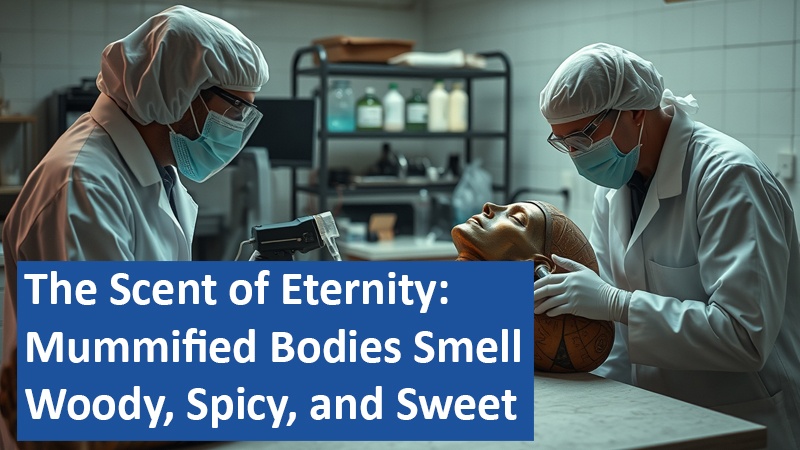
A new study reveals fascinating details about mummification practices in ancient Egypt. Researchers from UCL and the University of Ljubljana found that mummies emit a distinctive scent that can be described as woody, spicy, and sweet. The findings could help improve the conservation of these precious artifacts.
Find top-rated products on Amazon today!
An Olfactory Glimpse into the Past
The study, published in the “Journal of the American Chemical Society,” is the first systematic investigation of the odors of mummies. Using a combination of instrumental and sensory techniques, including an electronic “nose” and trained human “sniffers,” the researchers analyzed nine ancient Egyptian mummies.
The Chemical Composition of the Scent
The analysis revealed that the scent of mummies consists of a complex mixture of chemicals, including resins from coniferous trees (such as pine, cedar, and juniper), gum resins (such as myrrh and frankincense), and waxes. These substances were used by the ancient Egyptians for embalming.
Insights into Mummification Practices
The new data provides valuable clues about the materials used in mummification and how practices evolved over time. It also shows how museums have conserved the remains over time. The researchers hope that this type of chemical analysis can help ensure the safety of restorers, protect ancient artifacts, and preserve their olfactory heritage.
Scents as Keys to History
The study proves that scents can be an important source of information about the past. By analyzing the chemicals emitted by mummies, researchers can learn more about the materials used in mummification, the conservation practices of museums, and the natural degradation of the remains over time. In the future, the reconstruction of the scent of mummies could allow museums to design their exhibitions in new ways and offer visitors an even more immersive experience.
The study opens up a fascinating new perspective on mummification in ancient Egypt. It indicates that the nose can be a valuable tool for understanding the past.
How could museums use these findings to make their exhibitions more interactive and engaging? And what other historical artifacts could reveal new secrets through olfactory analysis?
Based on content from www.phys.org and own research.